This post is just a little run down of the most useful bone to the Early Medieval bone worker – the cannon bone, specifically those from cows.
What is a cannon bone?
A cow cannon bone
As hoofed animals essentially walk on their finger/toe tips, the long bones in their feet have fused together to form a third long bone below the wrist/ankle. This third long bone is the cannon bone (or metapodial).
Why are they useful?
The principle reason for their usefulness comes from the fact that they are straight and broad, quite thick walled and allow for a range of items to be made from a single bone. Additionally, because they are not a particularly meaty bone, they were not usually cooked in the Early Medieval and were discarded as waste.
As a result a bone worker could have an almost unlimited supply of cow metapodia if they were close to a major butchery site or in a settlement. This means that cow cannon bones are by far the most commonly identified bone used for working (in some cases accounting for almost 90% of the worked bone).
Preparing and breaking down a cannon bone
Assuming that the bone is already clean and ready to use, the first step is to saw the ends off the bone, leaving a tube. Once the ends are removed it can be seen that the cannon bone has a roughly “D” shape section. The flatter rear section of the bone can be removed by either sawing down the sides, or scoring before splitting with an axe (sawing is more time consuming but less likely to break the bone). Remember that the grain of a bone runs from end to end, only attempt to split the bone down its length, not across.
The flat piece can then be used to make belt buckles, decorative mounts, gaming piece, strap ends, comb plates and a number of other items that you wish to have straight instead of curved e.g. some pins and weaving beaters. The remaining curve of the “D” can now be split to produce blanks for curved pins, spoons and such.
Do not worry if it appears that your spoon handle or pin looks like it will have a curve; this is perfectly normal and many of the finds are actually curved but this is often not seen due to the way they are drawn or photographed. Likewise, bear in mind that many of the pins are also quite short (less than 100mm long) and it is usually possible to get at least a couple of short, straight pins out of most metapodials.
Another thing to remember is that if a bone is sawn rather than split, most of the small fragments that are left can be made into naalbinding needles.
Bone showing where it will be cut to produce different items – with careful marking and cutting the majority of these can be obtained from a single bone
Crafting items
Saws and rasps are the best tools for the initial shaping and roughing out. Once the shape is cut and nearly finished, finer files can be used to take out marks and round off, before scraping with a knife to smooth the surface. Finally smoothing can be done using a piece of sandstone, or sand on wet leather.
Most decoration is simple inscribed lines that can be done with a sharpened nail or the fine point of a knife. More intricate carving can be performed with a few simple chisels such as a small “V” or “U” gouge and a skew chisel.
Uses for cannon bones of other animals
- Horse – skates, long pin beaters, spindles
- Small deer/Sheep/goat – whistles, handles, needle cases, lucets
- Large deer – skates, handles (when halved),
Pins
Trondheim (top) & London (bottom)
York
Jarlshof
Buckles and Strap ends
Goodmanham
York
Leicester (A), London (B) and a double sided example from Dublin (C).
Spoons
York
Winchester
Weaving Tools
Thetford
York
London


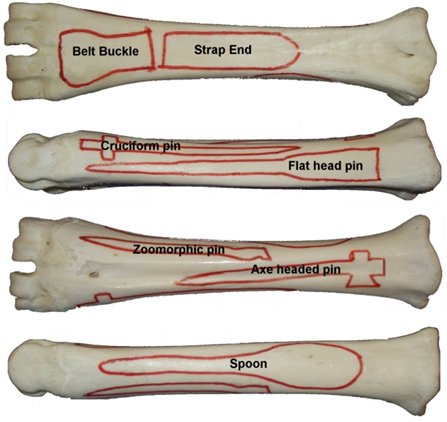
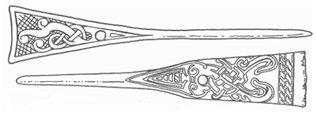

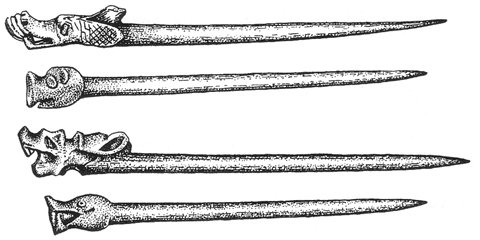

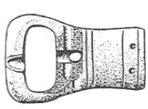
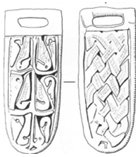
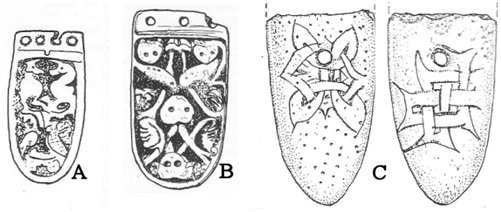
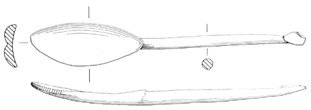




Have been bone cutting and carving for many years,it was good to start to see more people doing this.There is so many things that can be made and used from bones.Will be watching more from you in months to come.
well! now I know what to ask the butcher for now. I’m in need of a strap end and a few other items.